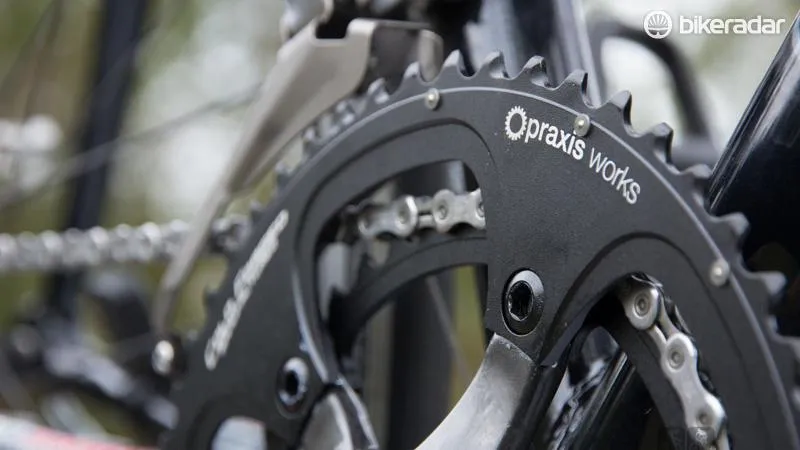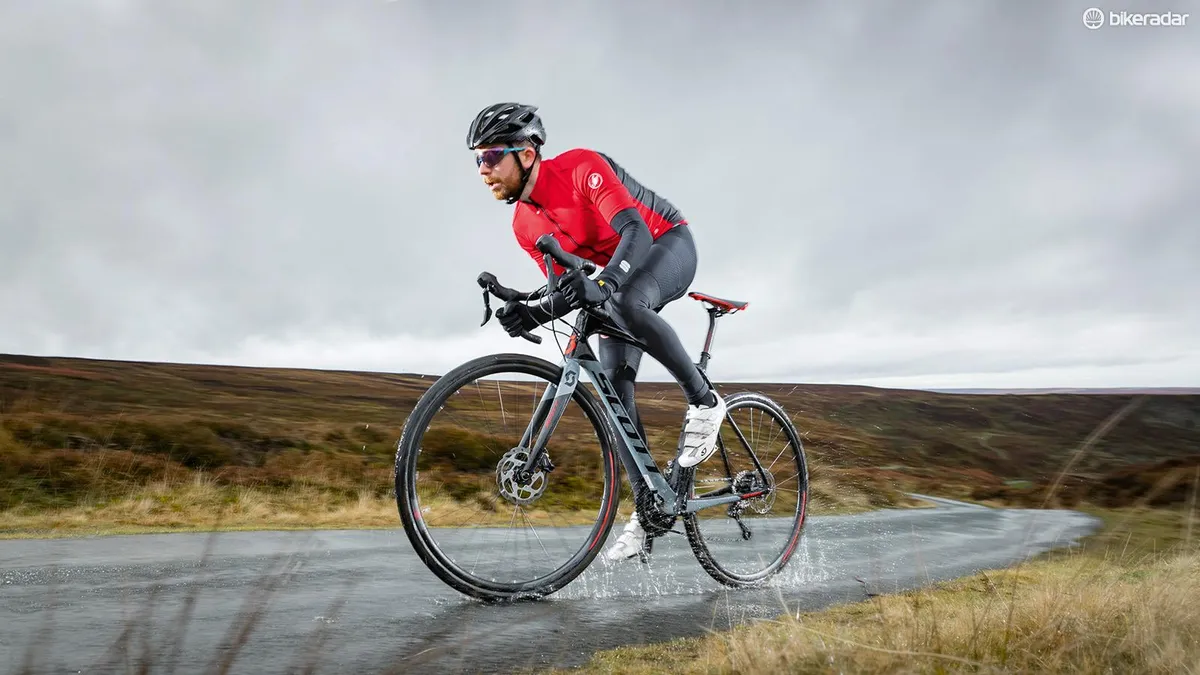A quick poll of my road riding peer group (MAMILs, sadly) revealed a staggeringly uniform belief that, yes, fitting lower gearing for any reason is an admission you suck.
Instead of swapping to a bigger cassette or smaller chainrings, what a 'real rider' should do is 'man up', be suddenly stronger and ignore the pain. Just like them!
- The top 5 upgrades you can actually afford
- Best women's road bikes of 2018: 9 of the best
- 6 simple tweaks to get the best bike fit
There’s a part of me that recognises this for the overcompetitive, self-congratulatory nonsense it is, and that part of me is my brain.
Yet there’s another part that thinks, “Don’t be so feeble, of course it would make you a failure. If you wimp out, get dropped off the back and brought down by a sabretooth tiger, don’t come crying to me.”
I’m assuming this part of me is my inner caveman. Either that or it’s my inner child, who just can’t accept he’s ageing towards the grave and long-since superseded by generations of stronger, faster riders. Truth is, I’ve paid my inner caveman to hunt down my inner child, so soon it won’t matter.
In the meantime, my attempts to be objective and rational about gearing are compromised. In large part this is because, in swapping from my old bike to a newer, heavier and taller-geared one, I actually went faster.

Physics dictates that, all other things being equal, a heavy bike will climb slower than a light one. Yet my Vitus Zenium SL VR Disc proved to be (as I wrote earlier this year) faster everywhere, whether I was climbing, descending or spinning along the flat. Even though it had fatter tyres and more mass.
Clearly the Vitus rolled better but was making me work harder (it forced me up out of the saddle far more frequently) and, clearly, I’d underestimated how much I could/should ask of myself while still being able to complete long, non-stop rides. It taught me some good lessons about pacing.
For that reason, the 11-32t cassette I’d ordered after the very first ride never actually got fitted. I stuck with the standard 11-28t (and the semi-compact 52-36t front rings), tried hard, and enjoyed a period of noticeable progress in my fitness and strength.
Knowing I’d already benefited from taller gearing meant that, once the idea of fitting that 11-32t cassette reappeared in my head recently, it came tangled in misgivings. And while I may be paranoid, it’s notable that British Cycling recommends low gearing if you’re climbing a lot… but even more notable that it says there’s ‘no shame’ in it. It’s clearly not just me that worries.

On the objective side is that professional road racers change their gearing all the time, lowering it for mountainous stages, and that their choice of gears is now wider than it’s ever been. If ‘real’ cycling were merely about ‘manning up’ (or womaning up), pro riders would all just be spanking singlespeed bikes as hard as possible… hang on, I think I just invented track cycling.
Of course, even track’s great champions can’t keep their bikes at full bore for much more than a lap and half, and with velodromes only being long enough for a few really juicy splinters, that’s not very far. It would take a ruthless mind to call the leaders of the Tour de France or Vuelta a España losers for ever gearing down.
And lo, I raged at the sky until it went black, hurled my bike into a volcano and rode the lightning bolts unto Hell itself
But back to me, because me me me. I’ve got longer climbs in my regular rides now, with the longest being a 4.5-mile long, 1,500ft high effort that takes me around 35 minutes. This beautiful 2018 summer has made conditions ideal almost every time, though I’m learning that when there’s wind it’s almost always a headwind. This headwind generally adds about four minutes, but it quite seriously feels more like four hours.
It suddenly occurred to me, grinding up the worst section into a cruel blast that clearly hated me personally, that by the time it was wet, cold and potentially snowy over the top, this climb was going to be truly horrendous. Maybe that unused 11-32t would give me a bit of leeway, psychologically as well as physically, to keep taking this ascent on?

After some handwringing, I thought of a rationalisation (if I go faster, then gearing down can’t be a failure) and fitted the 11-32t. And I went slower. And lo, I raged at the sky until it went black, hurled my bike into a volcano and rode the lightning bolts unto Hell itself. Okay, I exaggerate, but I was cross.
Eventually I realised I was trying too hard (because I believed the 11-32T ‘easy’) and doing worse overall because of it. More careful pacing fixed that. To be honest, I only discovered my mistake after finally giving myself ‘permission’ to be rubbish up the climbs from the very bottom one bleak day, only to end up feeling stronger and going quicker by the top.
The wider gearing makes proper pacing easier. Currently I’m climbing just as fast, at lower average heart and breathing rates, and able to pace myself that little bit better (while losing nothing of my 47mph top end at maximum spin). It’s also shifted stress I hadn’t even realised I was putting on my knees onto my thighs, which can only be good, and it’s all going to help as the weather turns bad – which means I’m more likely to keep challenging myself. It could work for you, too.
In short, lower gearing was the clever thing to do, hasn’t represented a failure, and is working well.
Kind of annoying I still feel like I’ve wimped out, then…
